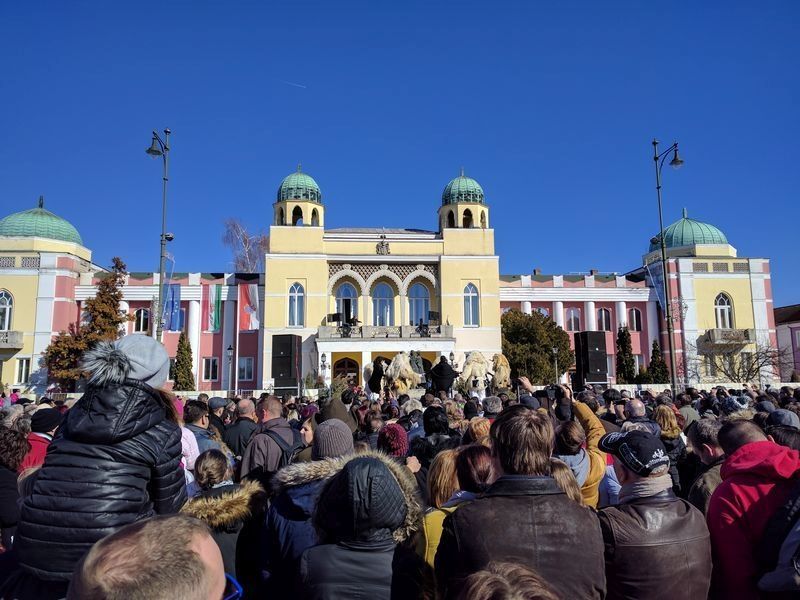SPRING 2017, ISSUE II.
Greetings from Budapest!
We send you warm greetings from Budapest, where finally spring is on its way. Budapest is at its best when all the trees are in full bloom, flowers are everywhere, and temperatures are warm. Midterm exams are behind us, and so is half of the semester! Students are ready to enjoy a more than a week long spring break. Here are some highlights since our previous newsletter.
Danube Bend Excursion
On our group excursion we visited two beautiful and historically significant cities, Esztergom and Visegrád. We visited Esztergom first, which is the birthplace of Hungary’s first king, St. Stephen and a former medieval capital of Hungary, and also the seat of the Hungarian Catholic Church. The Basilica of Esztergom is the country’s first, Europe's third largest church, and the 18th biggest church in the world.
The historical town, Visegrád is located in the Danube bend region. The city has always had an important strategic role in the Hungarian history. It used to be Hungary’s capital and an important diplomatic center: The first royal summit of the central European countries was held here in the 14th century, and a new Visegrád Treaty was signed here again in 1990.
Here we had a chance to enjoy a Knight’s Tournament performance by the Saint George Knightly Order. Our students were welcomed by fanfare on arrival to the tournament. The roof terrace of the Solomon’s tower provided an excellent view for the Danube Bend. As part of the performance, a king and a queen was selected from the visitors, dressed in robes and crowned by the knights, who showed their targeting and fighting skills with medieval weapons. Students could look into the world of the medieval knights and enjoy a royal feast in a Renaissance Restaurant.
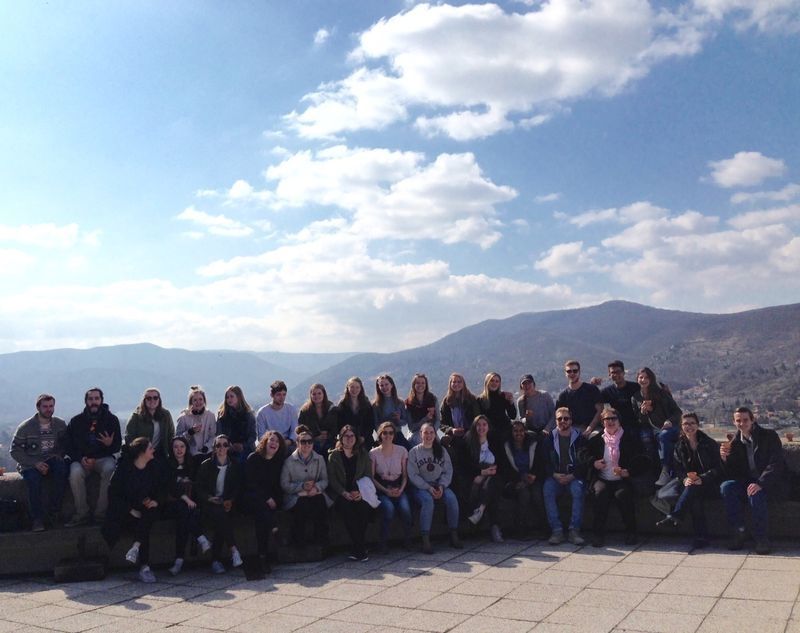
Lake Balaton – The Hungarian Sea
Our second trip took us to western Hungary. It included a guided visit of the 1100-year old Benedictine Archabbey of Pannonhalma, a World Heritage Site. We also learnt a great deal about organic farming in our visit to a small family-run winery dating back to the 18th century. Afterwards we went to visit Lake Balaton, the “Hungarian Sea” the most popular Hungarian resort. We visited Tihany on the northern shore. The weather was a bit cold, just as the water of the Lake, but some brave students took the opportunity to take a very quick dip in the Hungarian sea.
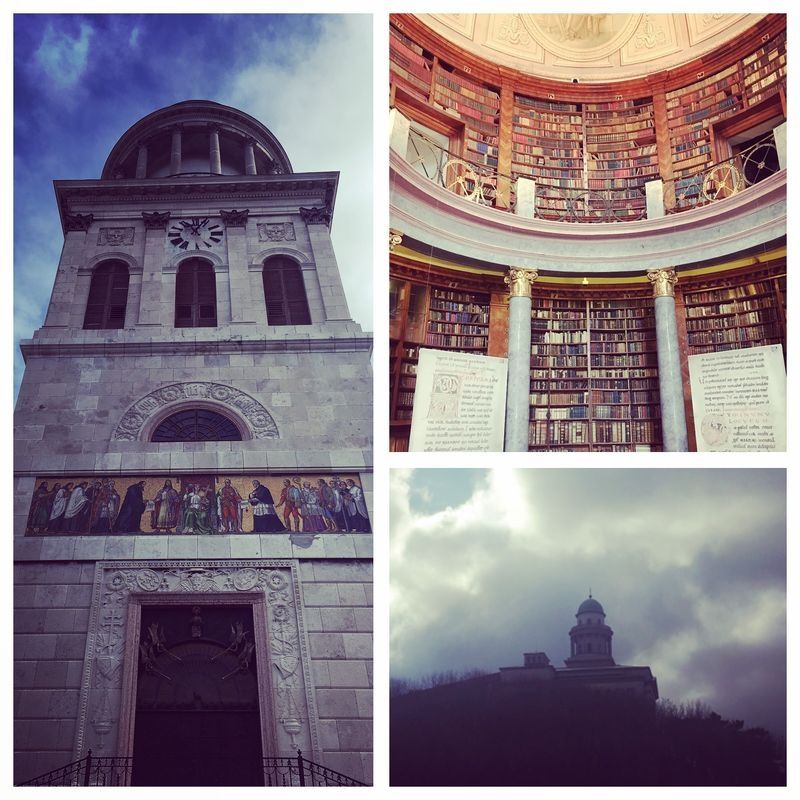
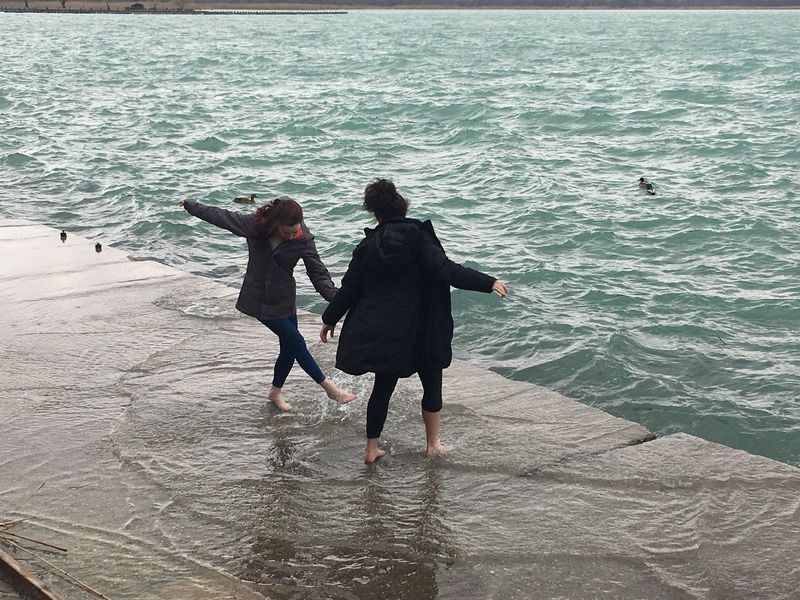
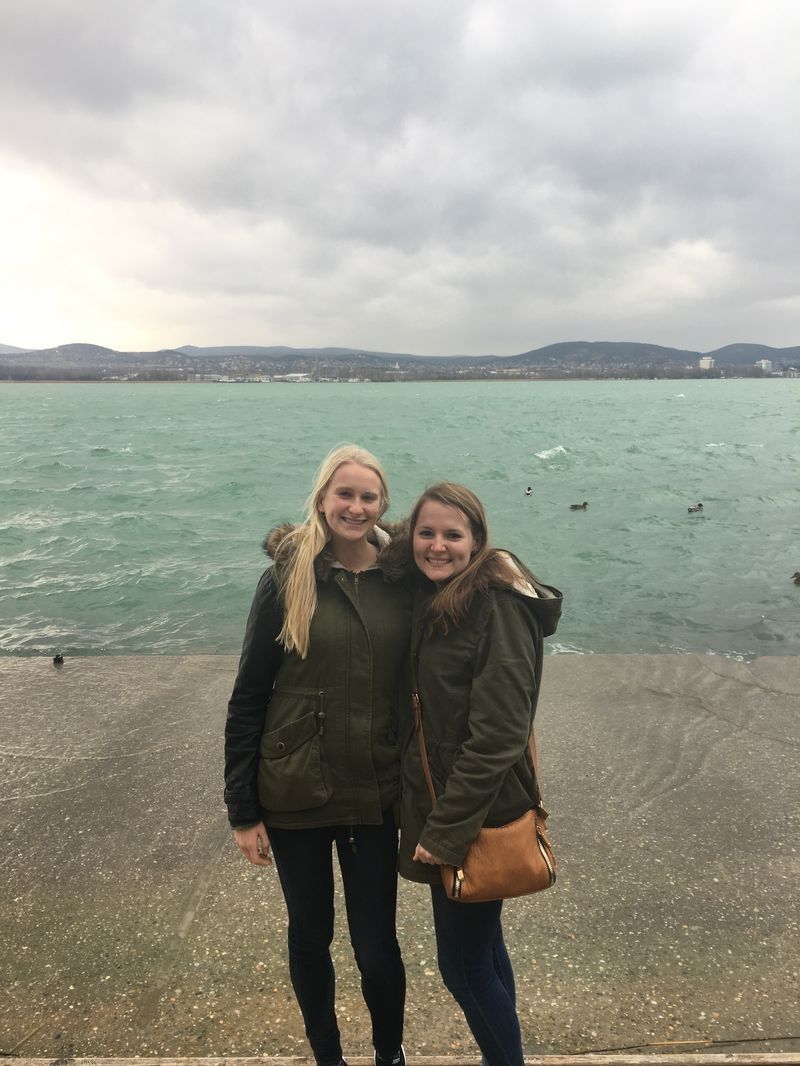
DAY TRIP TO PÉCS
Pécs, or Sophiane by its Roman name, was already an important city in the 2nd century. Pécs is a popular tourist destination as you can find a large number of historical buildings, ranging from early Christian burial chambers to Turkish mosques, medieval buildings, and contemporary art galleries.
During a nice guided walking tour, we were able to explore the major sights that Pécs offers, including the Cathedral, the Barbican, along with Cella Septichora (a World Heritage Site). The Cella Septichora, a sepulchral building with seven apses, has a floor plan which is unique in the whole Danube region. It is thought to have been built as a mausoleum for a prominent person or family in the second half of the fourth century. The St. Peter-St. Paul Burial Chamber Septichora is probably the most famous early Christian building in Pannonia. Students also enjoyed exploring the lovely Széchényi tér, the heart of the Old Town and the Love Lock Wall. You can also find here the Downtown Candlemas Church of the Blessed Virgin Mary, formerly known as the Mosque of Pasha Qasim.
It is a Roman Catholic Church, which was a mosque in the 16-17th century due to the Ottoman conquest.
The Cathedral on Dóm tér is one of Hungary’s most important medieval historical buildings. The oldest parts of the Cathedral are from the 12th century.
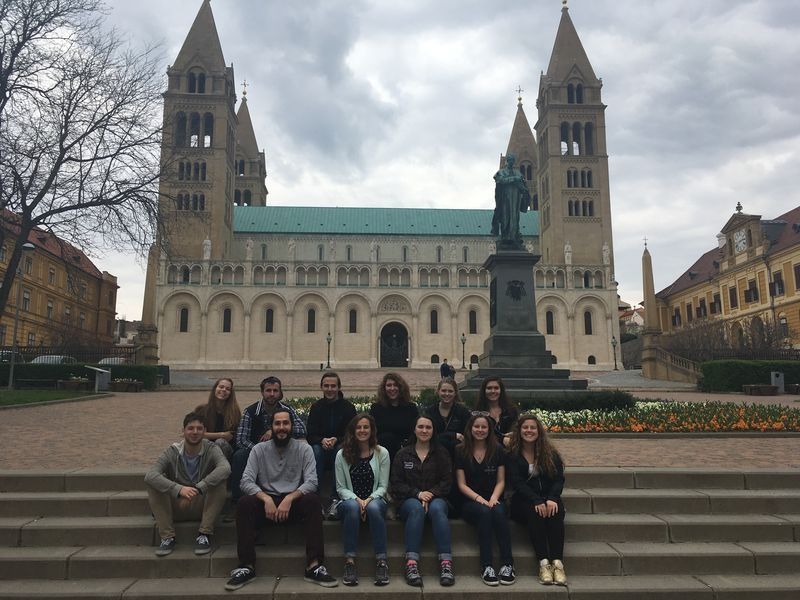
King Saint Stephen made the city an Episcopal seat; and after the Mongol invasion of 1241, the city was reinforced by a wall, which can be still seen. In 1367, the first university in Hungary, the fifth in Europe, was opened in Pécs.
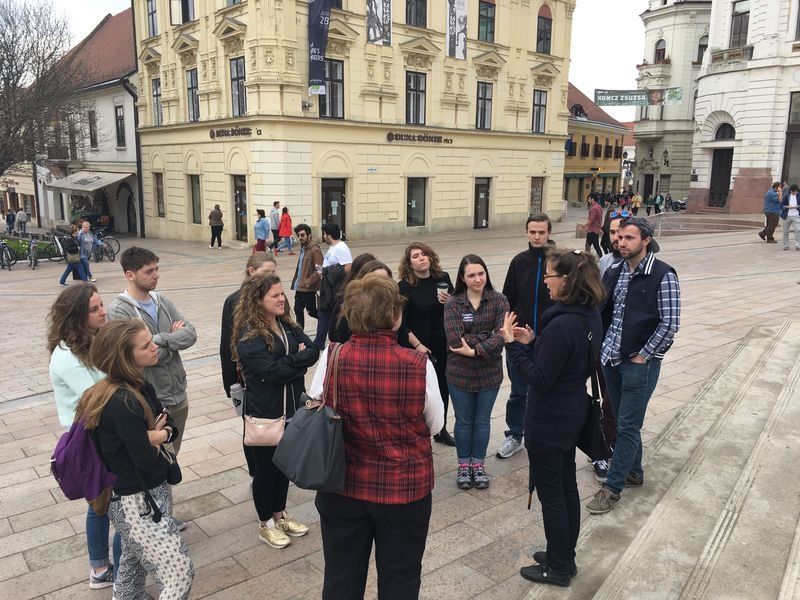
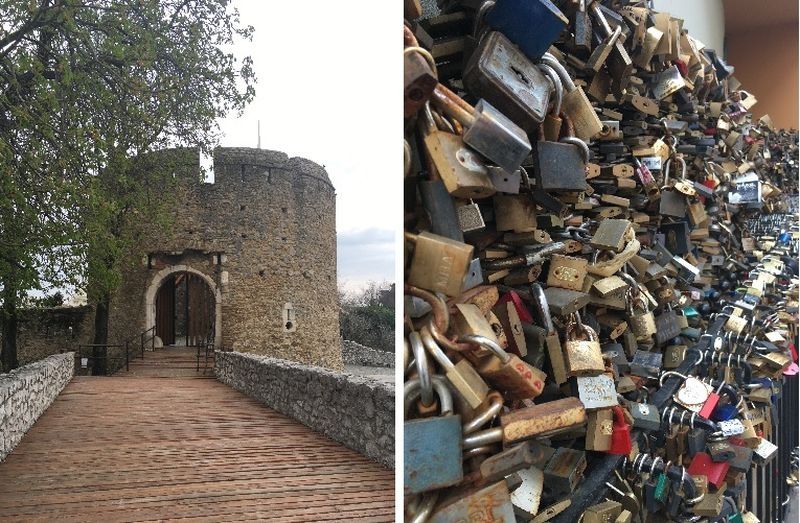
MOHÁCS
Our students are advised to attend various cultural events in addition to explore the city on their own. Several students attended the Csángó Ball here in Budapest. Csángó people are a special group of Hungarians living in the south-eastern edge of Transylvania, Romania. They maintained their unique folk culture, and retained an archaic form of Hungarian language. This Ball celebrates Csángó heritage and participants enjoy lots of music and dance.
A few people attended another famous event of the Carnival Season in the southern part of Hungary.
Busójárás in Mohács is on UNESCO’s World’s Cultural Heritage list. The festival takes place just before the beginning of lent in the Christian calendar. One interpretation as to the origin of this festival is connected to celebrating the end of winter and heralding in spring and the rebirth of nature. The other interpretation lies in history. Local people tried to chase away their Turkish occupiers by dressing in frightening outfits and making noise with various clappers. This festival also entails folk dancing events and culinary pleasures for visitors.
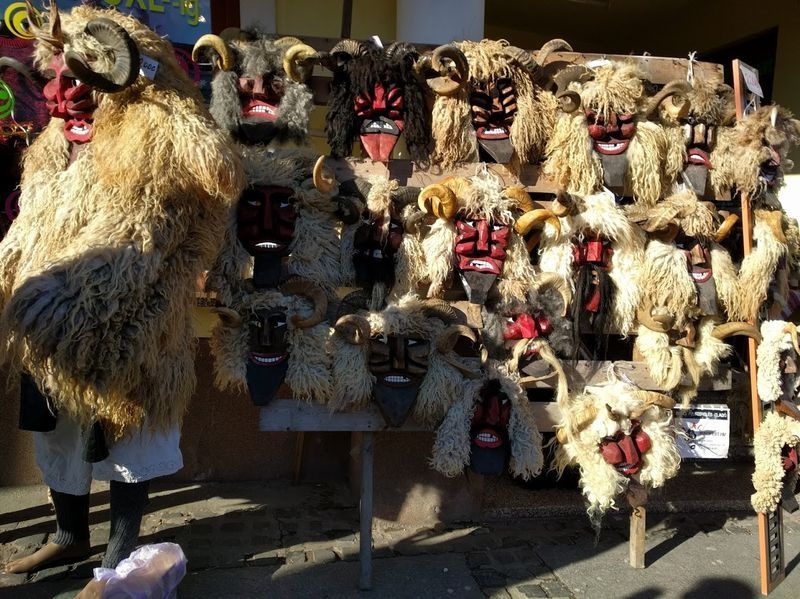
Best regards,
Elizabeth Simon, Resident Director
Judit Fekete, Resident Coordinator
Dóra Kovács, Program Coordinator
Related Posts

Budapest named European Best Destination 2019
Budapest has been voted this yearʼs "European Best Destination" by travelers, with the Hungarian capital topping a list of 15 competitors, ahead of second-placed Braga in Portugal, and the Italian... keep reading
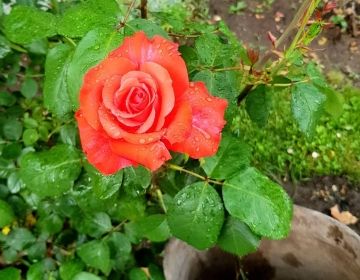
Köszönöm Klárika - written by Cassidy Campbell
“Thank you” is one of the only words I know how to say in Hungarian. This does not go very far when all I wanted to say to my adorable... keep reading
